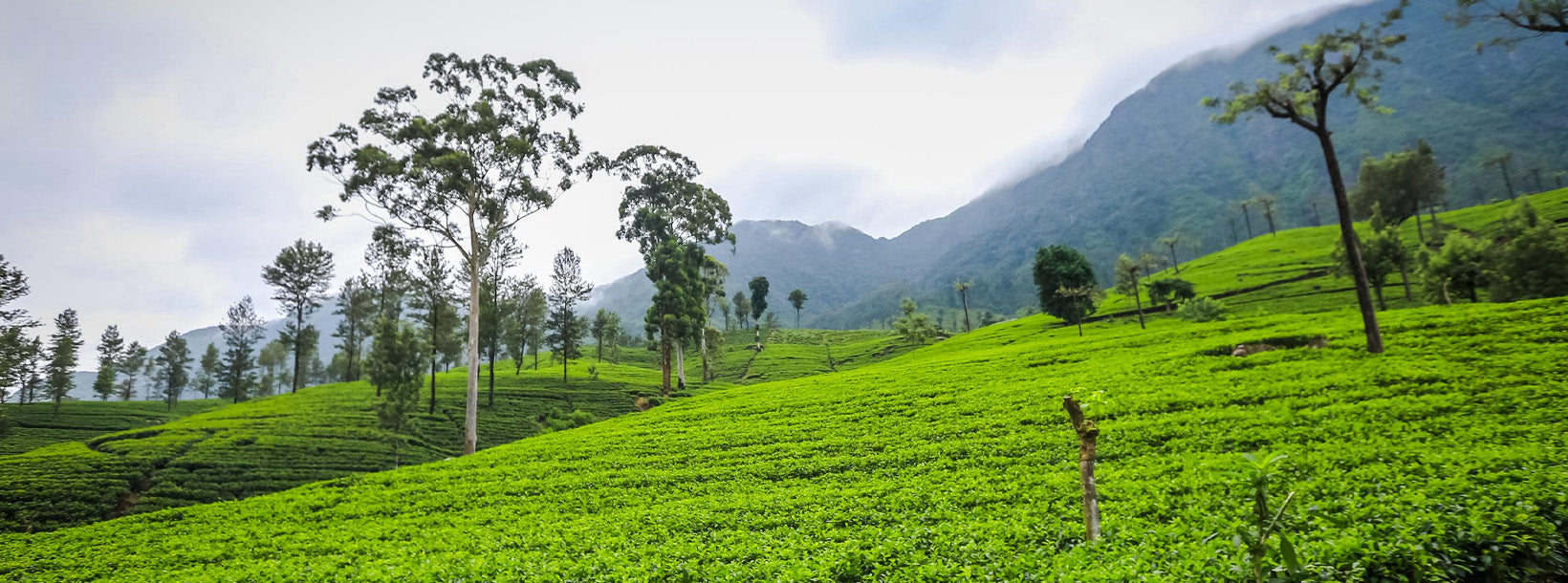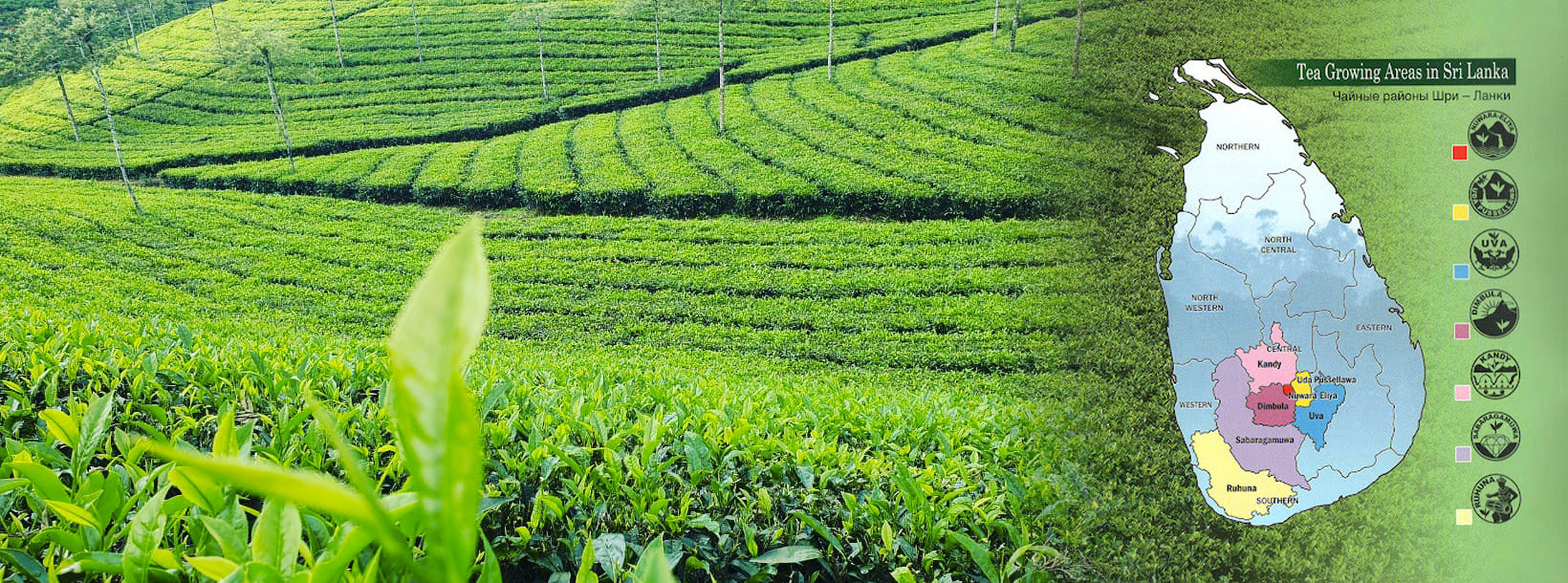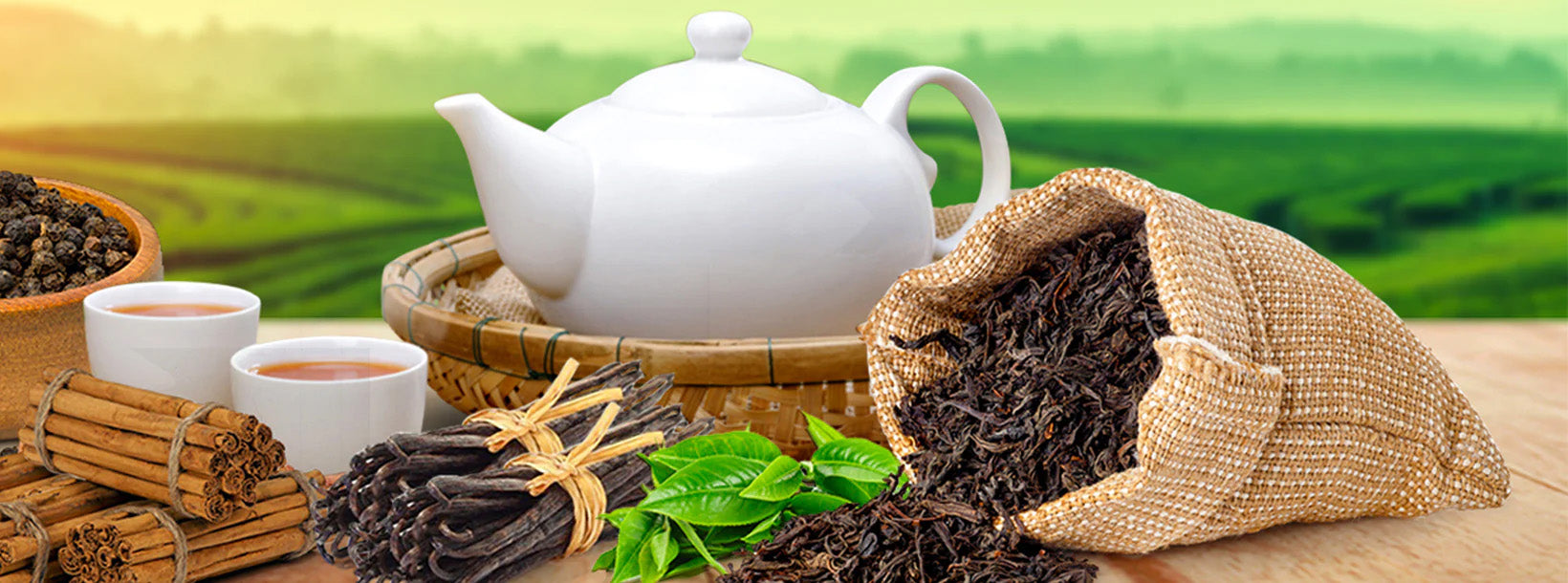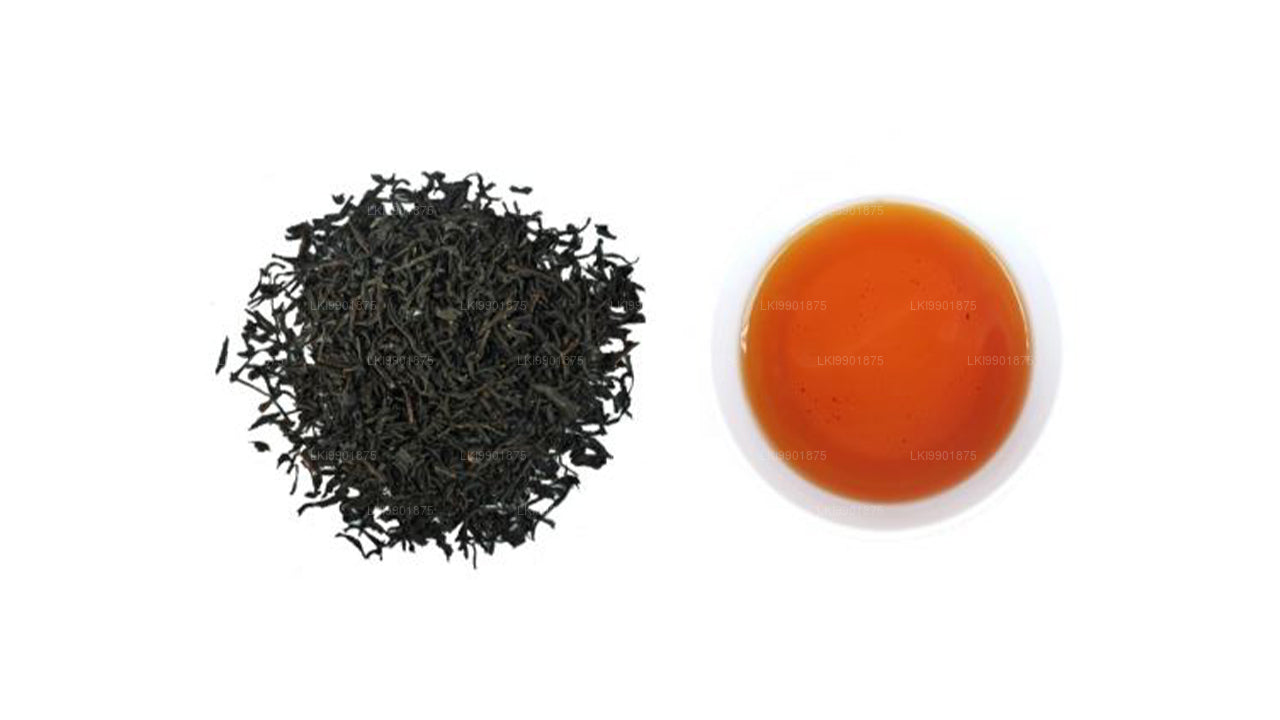
Fazendas de chá
As plantações de chá do Sri Lanka, localizadas principalmente nas terras altas centrais, são famosas por produzir alguns dos melhores chás do mundo. Essas plantações exuberantes, como as de Kandy, Nuwara Eliya e Hatton, oferecem paisagens cênicas e uma rica história. As plantações contribuem significativamente para a economia do país, exportando chá do Ceilão de alta qualidade para todo o mundo.

Regiões de chá do Ceilão
A bebida na sua xícara tem uma história para contar. Ela fala de colinas ondulantes, sol abundante e províncias verdejantes. No Sri Lanka, as províncias do centro e do sul produzem a maior parte do chá. Altitudes e microclimas variados influenciam o sabor, a cor, o aroma e a sazonalidade característicos do chá do Ceilão.

Graus de chá preto do Ceilão
O chá do Ceilão, como sabemos hoje, vem em diferentes variedades, com sabores e aromas únicos. Além da variedade de chás, existem variedades de graus em que o chá do Ceilão foi separado.
Kandy Tea
In 1867, James Taylor marked the birth of the tea industry in Ceylon by starting a tea plantation in Loolecondera estate in Kandy in 1867.
He began the tea plantation on an estate of just 19 acres (76,890 m2) in Kandy. In 1872 he started a fully equipped tea factory in the same Loolecondera estate and that year the first sale of Loolecondra tea.
This area factories produce a broad mix of different ‘Tea grades’ and they have different leaf-particle sizes.
They produce from whole-leaf tea grades to semi-broken grades. For example OP Black Tea, OPA, BOP, BOPF tea, and Green Tea. In addition, CTC-style teas are also producing in the Kandy area.
The leaf particle size affects the strength of the brew.
Kandy teas tend to produce a relatively bright infusion with a coppery tone. Therefore, they give lighter in the cup and good strength. But the strength is not as much as the lower-grown teas Sabaragamuwa and Ruhuna area.
In general, in the first quarter of the year, you will get the best quality of tea.
Further, The first quarter receives cool, dry weather across the district to produce the best tea.
Kandy region is described as ‘mid-grown’, tea area. The altitude of cultivation ranging between 2000 and 4000 feet sea level.
Kandy area located in the middle of the three districts in the Central Province (North of Nuwara Eliya, and south of Matale)






